Let’s just get this out of the way up front: I’m officially proposing that InsideRide call this the product the FLOATR.
The Wahoo-specific accessory enables you to essentially float your KICKR and ultimately your entire bike on two small platforms that act akin to a rocker plate, except with more axes of movement and with a smaller footprint. Though, also with only Wahoo KICKR compatibility at this point.
But I suppose we’re just getting ahead of ourselves at this point. See the product is somewhat already officially named the ‘InsideRide KICKR E-Flex System’, and isn’t made at all by Wahoo. Rather, it’s a 3rd party accessory from InsideRide. That company of course is well known in the indoor training space, primarily with their E-Motion smart rollers system that I demo’d last month.
With this new product though they’ve borrowed the floating fork stand that I tested (and liked), and paired it with a small secondary platform not much bigger than a cafeteria tray. That rear platform clamps onto your Wahoo KICKR (any model year, but not the CORE/SNAP), and allows both tilting side to side movement as well as front/back movement.
I’ve got a few workouts in on it now, so let’s give things a quick spin. Note that this is a prototype, and based on some feedback I’ve given them, they’ve already made a few manufacturing changes. But we’ll get to that later.
If you want to just dive right into it – here’s my video to get the quick one-coffee duration overview:

Got all that? Good, let’s dig a bit deeper.
The Hardware:
As noted there are two pieces to this puzzle – and both are critical to making the whole kit work. Without either piece the system won’t work, since the two components (front and back) work together to enable motion. Starting on the back you’ve got the platform that holds the KICKR itself. As noted above it’s roughly the size of a tray table, and technically it reduces the footprint of the KICKR ever so slightly, since you’ll close up the legs while on the platform.
To get it installed you’ll first twist the KICKR feet until they come out (just like feet on a piece of furniture), then you’ll remove the front plastic cap – it just easily pops off after removing a single screw. Don’t worry, you can re-install all things in under 90 seconds if you decide flexing isn’t for you.
Next, you’re going to place the KICKR onto the platform. It’s got a specific spot for it, and it’ll self-stabilize as it has a groove there to slide the middle leg into. Then you’ll lock it in place using four wing nuts:
After which there’s a small pod you’ll shift out of the way that lets the platform start to move and tilt (otherwise mounting the KICKR to the platform would be like wrestling on a slip and slide).
Here’s the final look/configuration after you’ve simply folded the legs back in like normal:
With all that set, you’ll shift your attention to the front fork stand. You’ll simply unfold it and screw-in a few additional screws to lock it in place.
After that you’ll just mount your front fork to it. Like with the floating fork stand that I reviewed on the rollers, this still oddly doesn’t come with a front skewer. So either go out and spend a couple dollars to leave one there, or keep swapping it back and forth to your front wheel. In my case I grabbed a spare one from a drawer.
After that, simply mount your bike to the KICKR and fork stand just like you normally would. Nothing fancy to do except then get on the bike…but that, that might require a bit of fancy.
Riding it:
If one steps back and evaluates the ways you can crash your bike within your own living room, there’s a rather simplistic scale that has three data points on it:
A) Riding a normal trainer/KICKR: Near-zero chance of coffee table crash unless you do something exceedingly stupid
B) Riding the InsideRide KICKR Flex System: Low but plausible chance of coffee table crash while mounting bike
C) Riding rollers: High and rather likely chance of coffee table crash at some point in your roller career
Now, I’ll say upfront that it sounds like InsideRide is already taking my initial feedback into account and looking at adding a bit more base stability, so it’s less likely to tip. But, getting on the bike you’ll want to lock the front rotational knob, so that it doesn’t rotate. By cutting off the rotation, it’ll then keep the rear of the unit from tilting, which will reduce the tippage factor (as you’ll see in the video):
Once on the bike you can simply reach-down and unlock that again, it just takes one twist – so it’s super easy. The first thing you’ll notice is that everything is connected. I know that sounds obvious (especially if you watched the video), but when you twist your handlebars (either naturally with each pedal stroke or manually), it’ll in turn twist the frame which then causes the rear of the bike to tilt. Exactly like outside.
As you can see, the back of the bike will tilt left and right dependent on the front fork rotation. While it might feel like the front of the bike is tilting – there’s actually no tilting on the front of the bike. It’s purely rotating, which drives the tilting feeling. Look specifically at the flywheel and see how it’s tilted both directions:
However, both the front and rear do slide forward and backwards. In the case of the front you’ll see more easily that it has a small roller system built into the front frame, coupled with rubber-band like cables that drive the motion.
Meanwhile, the back has the same bands, it’s just they’re a bit more hidden under your trainer.
With all the how it works aspects covered, what about the ‘What does it feel like?’. Well, the answer there is mostly quite good. As you’re just pedaling along normally you’ll notice/realize that with each pedal stroke you’ve got a very slight bit of rotation into the handlebars. In some cases perhaps only a millimeter or so, but just enough that it feels a bit like you’re constantly floating, because the bike doesn’t have a locked feeling.
Meanwhile, when you start to accelerate or sprint, it’ll drive the bike forward slightly on the rolling platform – exactly like their previous products (and also roughly akin in feeling to the Saris MP1 platform). Of course, a split second later you’ll slide slightly backwards – mimicking the lack of acceleration driving you forward. Mentally it works quite well, though obviously outdoors you don’t go backwards after each sprint.
From a tilting standpoint, you don’t think about it. It just happens. The harder you press into the pedals the more it tilts, not due to the direct nature of pressing into the pedals but because you’re actually pressing down into the handlebars when you sprint. Additionally, unlike some rocker plates, you’re not fighting the system. There’s no excess platform weight to combat, because the only weight you’re moving is the KICKR itself and your body.
Again, it’s really best for this particular topic to watch the video – even if you skip about half-way through it to where I’m riding and do a few sprints. Plus, it had three camera angles, including a top-down angle.
Ultimately, I like it quite a bit – it’s far more affordable than higher-end options, or perhaps more practical than building your own. On the flip-side, it’s only compatible with the KICKR. There’s absolutely no way to modify this specific model to fit another trainer model (even the KICKR CORE wouldn’t be compatible). InsideRide would have to come out with additional models for each trainer they want to support (for the back platform portion, the front stays the same). The company says they’re open to that, but first want to see what demand looks like.
Going forward:
Every so often a smaller company in the space has their breakout moment, or product. Up until this point, InsideRide has mostly been focused on a niche product (smart rollers). But I think this trainer accessory could finally be what gains them some popularity beyond the niche realm of rollers. After all, no company has sold more smart trainers than Wahoo, and in particular, no single trainer product model has more units in the market than the Wahoo KICKR. And at present, it’s a very static product with no give or sway.
The growing trend over the past 12 or so months has been around motion. We’ve seen it with the numerous homemade rocker plates, the Saris MP1 Platform, the Kinetic R1 trainer, and even Wahoo’s own KICKR CLIMB to go up and down. The challenge with many of these products has been the price points – it’s a bit of feast or famine. You’ve got super expensive options like the MP1 at $1,199 or the KICKR CLIMB at $699. And then you’ve got folks making home-made rocker plates for a few hundred bucks.
In comparison, the ‘assemble in 10 minutes’ InsideRide FLOATR KICKR Flex Motion System is pretty reasonably priced at $399 for a well-built system. I expect that any final version they start shipping will include the few tweaks that I suggested to improve stability and dampen any bunny hopping on sprints. They’ve already sent over some photos of those mechanical tweaks made within a few hours of initial e-mails around those topics.
But ya know what might be the best part of it all? There’s no firmware to update, or electronics to fiddle with. It’s just good ol’ mechanical goodness. No waiting for a future firmware update at an unknown date to fix accuracy issues like seemingly every other trainer product this season. I like it.
With that – thanks for reading!

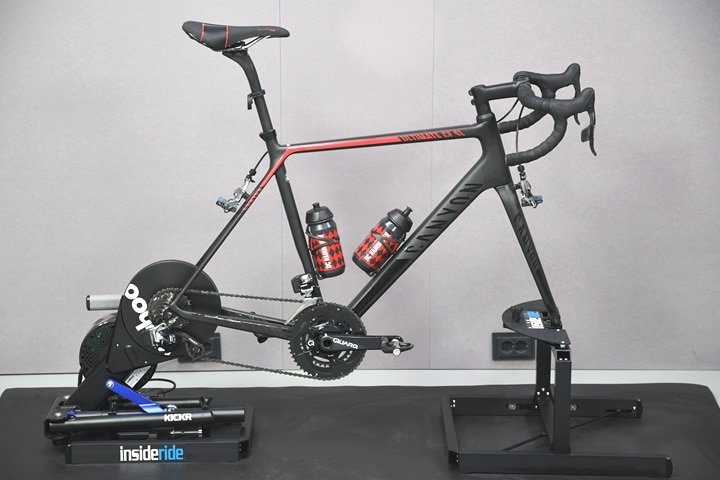
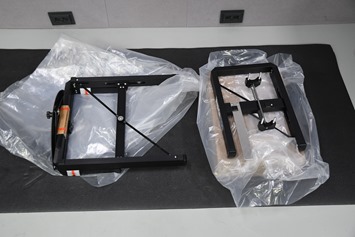

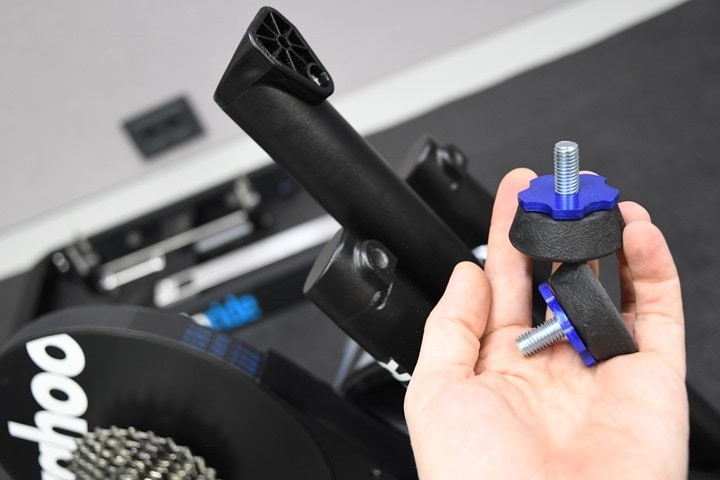
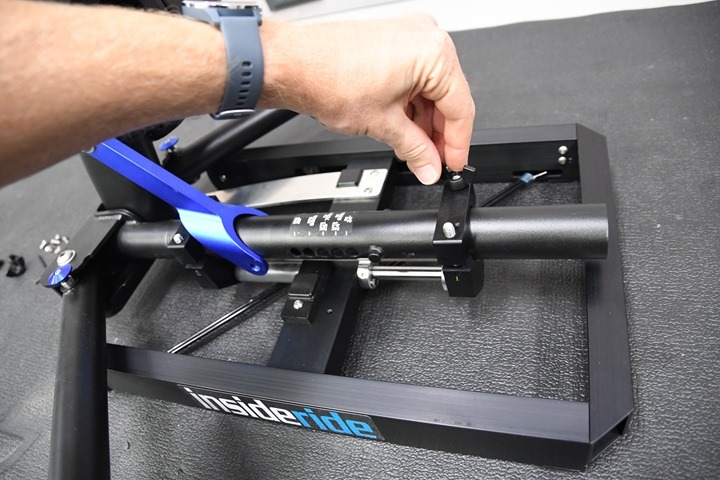
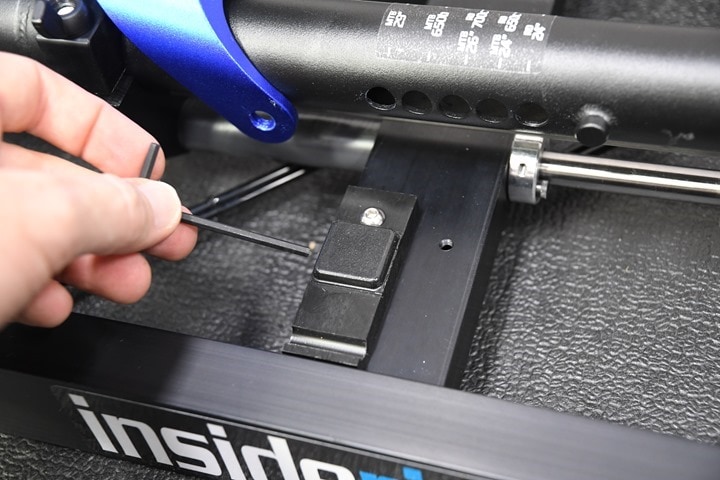
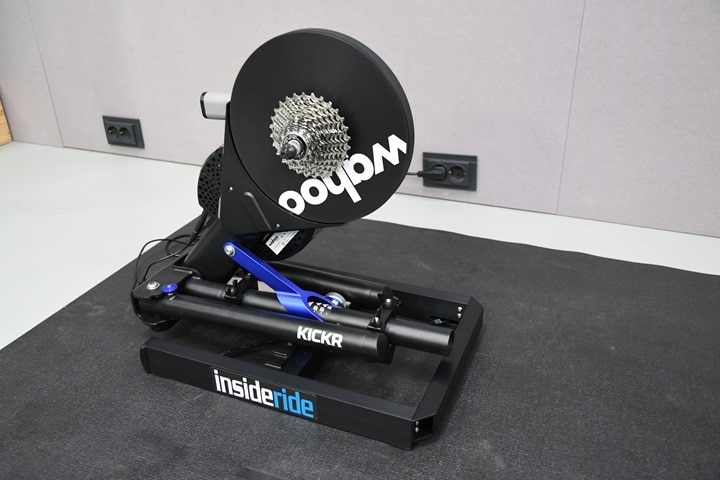
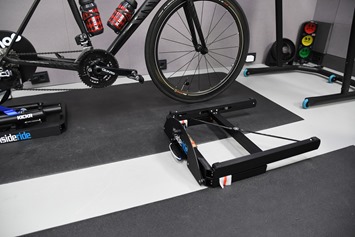
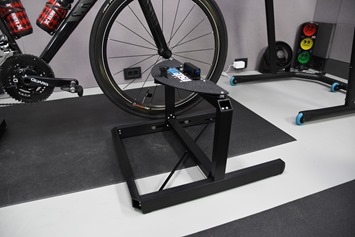
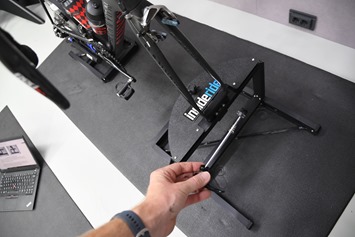

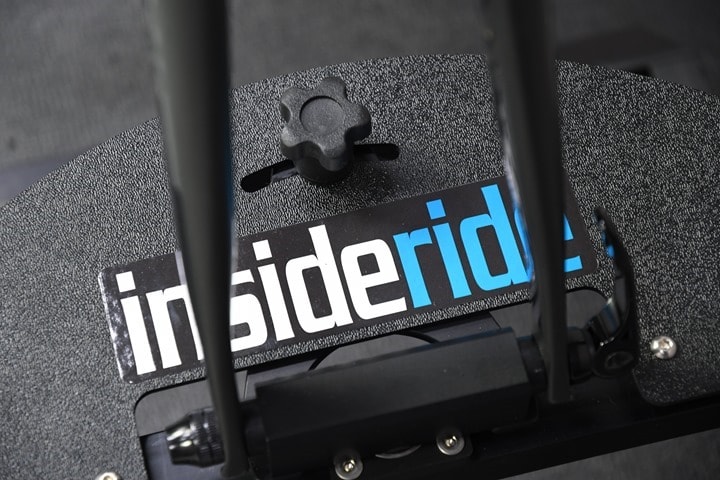
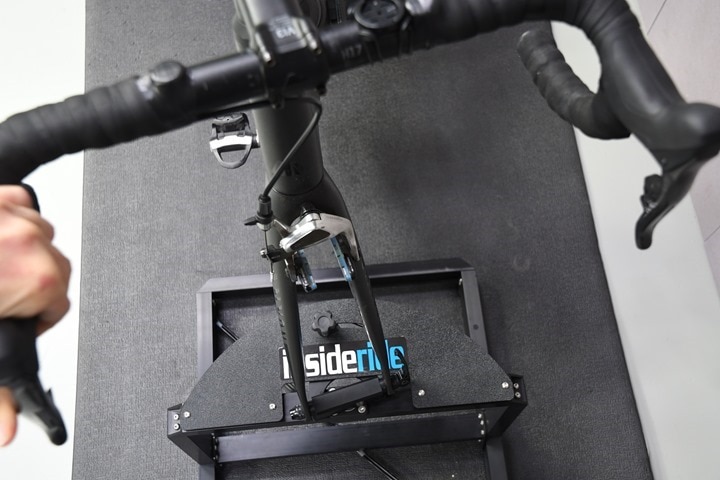
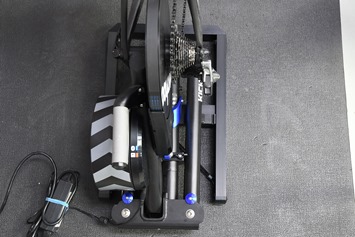
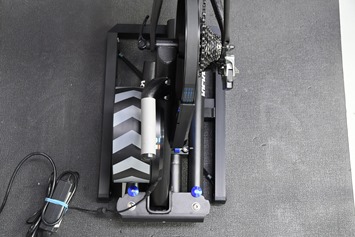
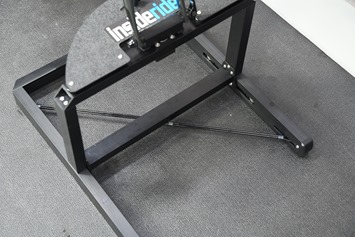
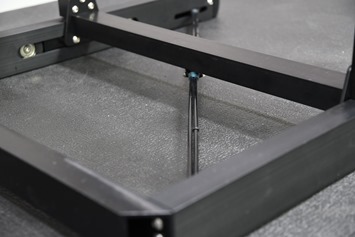
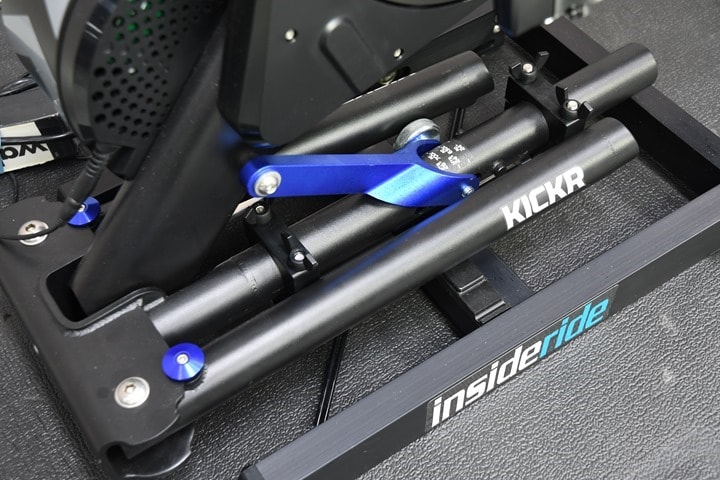
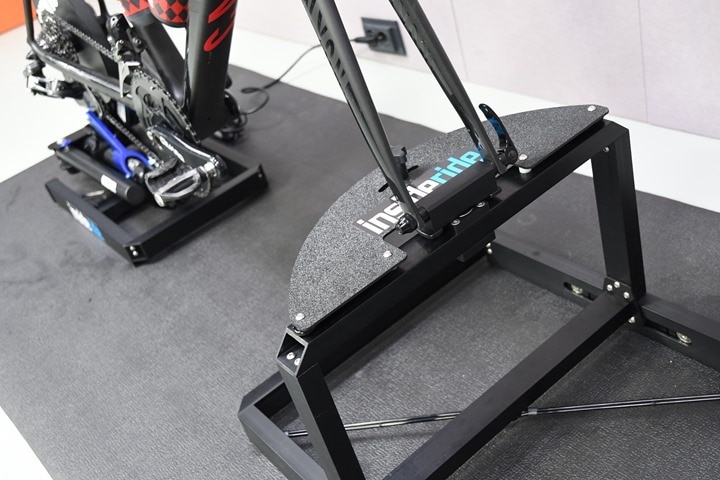
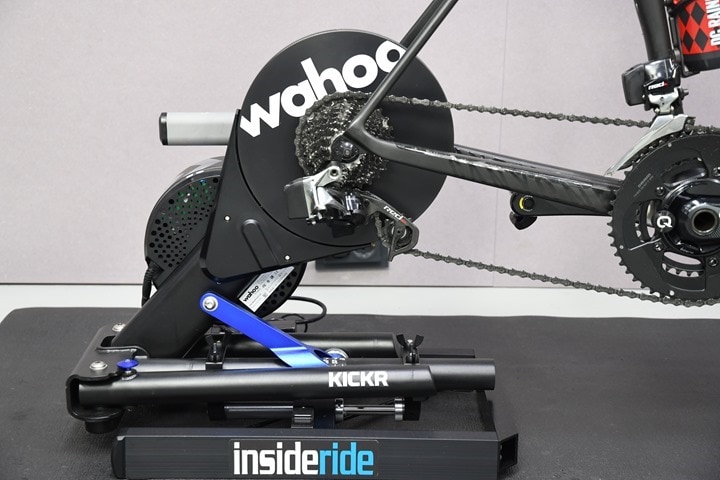





















Think they’ll ever make the CLIMB fit on the FLOATR? (Kidding of course, but someone will want it)
It actually wouldn’t surprise me. And in fact, the CLIMB already rotates fairly well by itself. In theory all they’d need to do is discard the top-portion of the floating fork stand, and have a proper base to attach CLIMB too.
I actually did a bit of CLIMB + prototype CycleOps/Saris MP1 rocker plate without issue.
Why can’t you just use the CLIMB with this in place of the FLOATR? The CLIMB allows for some fore and aft movement.
The biggest reason is the the Inside Ride Floating Fork Stand strictly controls lean angle. The steering input leads to the lean angle as a byproduct of the head tube angle.
If you remove that and use a Climb only, the E-Flex will lean all the way to one side and stay there. That’s because there is no leveling spring on the rear section of the E-Flex design. They are using the front stand for all lean and leveling control.
The Climb works fine with a regular rocker plate that includes it’s own leveling springs. There is an element of handlebar force input that matters, but the leveling springs in a rocker are there to help the process.
It is theoretically possible to add leveling springs to the E-Flex rear, that would then allow use of a regular wheel or the Climb, but it’s not a quick swap that works easily.
Will you be doing any rocker plate reviews/comparisons in the near team? Thanks!
Would you be reviewing the MP1? Would love some thoughts on whether it works well with the CLIMB. Thanks!
RE: MP1-
As soon as it arrives, though, I don’t have a timeline on that. I have used the previous prototype though with the CLIMB without issues.
RE: Other rocker things
I think I’ll review things as it makes sense – likely in the larger ecosystem. So things like the MP1 makes a bit more sense as it’s globally available/etc. With the Kinetic R1, if they ever fix all the accuracy issues it’s sitting downstairs ready to be reviewed – so again, I think that makes sense as it’s a bit of a unique value prop.
If I see other things that are ‘wow’ or otherwise unique and at the commercial shipping level, then probably. Versus if it’s more of a run of a hobbyist thing, likely less so. No hard and fast rules.
I would love to see the floater for the Climb. I really like this product and certainly bias due to owning a Kickr. However, I won’t consider buying one unless they offer the option for the Climb. I own a Climb and don’t see myself replacing the Climb with the floater. If it’s a floater Climb, totally different story. Thanks Ray!
When can we expect to see a review Saris MP1, or an update to your previous posts on its precursor? I’m curious, and now it seems that it’s Climb compatible. Too early to comment on FlOATR vs MP1?
This one looked promising… link to turborocks.co
Interesting product from InRide.
I think the only problem with homemade rocker plates is the lack of front to back movement. In my mind that is the one thing that makes most rocker plates feel “missing something”.
Several people have made ricker plates that include fore-aft movement. I made a test version and it works well with the other ricker movement
Some units use linear bearings that give large movement like the Inside Ride design. Others use rubber vibration mounts that give a more minimal movement, but it is an improvement over no fore-aft motion.
Mine was simply mounting my rocker on my fore-aft motion platform that I built for my motion rollers. Essentially a copy of the Inside Ride motion rollers.
I am testing 2 versions of a simple addition to rocker plates to add fore-aft with minimal parts.
In all cases, the additional fore-aft motion is welcomed and adds to overall comfort on the trainer.
I’ve never bothered with a platform for the rollers as I thought I would benefit more from the supposed pedaling balance help the rollers are supposed to give, but I agree that having a little bit of “give” on the trainers definitely makes sessions go a bit smoother.
I made the simplest rocker plate for the trainer, but in the end, I couldn’t shake that unnatural feeling I had from them and given up.
The beauty of the fore-aft motion platform on rollers is that you can still work on that spin. You just watch the fore-aft motion with respect to your input. The more visible motion points to room for improvement.
You can work on the spin and still change your stroke in positive ways, even with the motion. Then you also get the overall improvement in comfort and feel on the rollers. I see fixed rollers as lacking and there is effectively no reason not to include the motion, other than potential cost. But from a function perspective, fore-aft motion on rollers is a win-win to me.
Very interested as a KICKR owner and former Kinetic Rock n Roll rider. Looks like the best of both worlds.
@Ray
Based on the video, it exhibits a lot of movement compared to Kinetic Rock n Roll. I’m afraid that the flex is significant, especially when you lean. Another way to describe it is twitchy handling. Kinetic Rock n Roll appear to be far more stable.
What did they tell you about expected shipping dates and US availability?
Will it work with a thru axle?
Yes, their fork mount has a 12mm x 100mm thru axle option. I assume it swaps out the end caps between the QR & TA versions.
Just for info for any European readers:
I got an email back from inside ride at the end of last week saying they aren’t sure if they will have European distribution for this season….they have added my name to the list and will get back to me with a shipping cost once they have finalised the package size.
Ray – maybe if you get any more inside info from them on this you could let us know.
Fingers crossed shipping is not too expensive as I would really love one of these for the dark months ahead using Trainerroad!
Comparing feel of this Kicker + E-Flex Motion vs InsideRide E-Motion SmartPower Rollers with Floating Fork, which would you say is more realistic, which feels nicer to you (understanding that you’re not a roller kinda guy), which is more stable (if the overlean issue is fixed)?
I was wondering if anybody can chime in on this? (Kicker + E-flex Plus, vs E-Motion Rollers with Floating Fork).
I have an OG Kickr (that I actually won from you, thanks!), is this compatible with it or only current KICKRs?
This works with every version of Kickr (see below for clarity).
This includes the original Kickr 2014 (with the black, low-mounted handle) and every one with the gray high-mounted handle (2016, 2017, 2018 models).
It does NOT work for any of the Kickr Core or Kickr Snap trainers.
Thank you! I think I’m gonna have to buy this.
What is the possibility of InsideRide releasing this for other trainers?
As Ray mentions (in the post and/or vid?), Inside Ride are waiting to see the reception to this first version. They picked the Kickr since it is the most common model. It also lends itself to this minimal design well with the collapsible legs.
If this sells well, it could be an opening for more models.
It would be a minor design update to alter the center mount beam to fit a Kickr Core with the horizontal legs removed. They can use the remaining mounting holes (4 total) and the curved plates as the mount attachment. I see that as a relatively easy design change for them, and a good choice for a fairly common trainer.
Moving to the next most likely based on potential number of customers, the Neo is possible. But it will require a very different trainer base (wider and possibly taller) to fit the Neo since it folds very differently.
I wonder if removing the legs (wings) from a NEO would make things any simpler to create a mount.
That may be possible, but it’s a fair bit more work than the simple remove of the side leveling feet and front foot from the Kickr.
I haven’t looked closely at my Neo 2 to see how you disassembly the wings. Might be easy, but with the locking aspect, it could be more complex.
If someone with more design chops than I have wanted to figure out how to mount the Kickr Core on this and then link out to a PDF I would buy one. Just saying…
Will it work with a first gen Kickr?
Repeat from my reply above:
This works with every version of Kickr (see below for clarity).
This includes the original Kickr 2014 (with the black, low-mounted handle) and every one with the gray high-mounted handle (2016, 2017, 2018 models).
It does NOT work for any of the Kickr Core or Kickr Snap trainers.
“unlock some rocker plates” typo: unlike
Have you tried different bikes to see if it feels noticeably different? The coupling of fork rotation to rear tilt depends on the bike geometry and so different bikes might feel different.
Neo support would be awesome. Also, if you’re willing to spend Neo money, it seems reasonable that you’re willing to spend a bit more for a rocker setup…
There are several “regular” rocker plates for sale from smaller builders in the US and EU. Some are rear-only designs and others are full-length versions. They range from $300-$500 USD.
Then there is the pending MP1 from Saris, but it is playing in the wrong sandbox with their $1200 USD price.
I am hoping that products like the Flex end up with real demand that leads to more options at a wider range of prices.
I love my Kickr CORE. Please please make an adapter/option for the CORE too!
I am recommending that people email Inside Ride directly with requests like this. I think it is good for them to hear directly from potential buyers.
I speculate that a Core version is a relatively easy design revision from the Kickr one. If so, it might not take a lot of interest before they take it on and make one. I am hopeful for you and others to get them to make it happen.
info@insideride.com
axis’s = axes :)
I am a little concerned about torsional forces put on the fork. Forks are not necessarily designed to be twisted while being put thru a lateral motion. I wonder if there was a failure, would the OEM cover anything under warranty? Just a theoretical question to throw out there.
You could argue the exact same thing about the rear triangle being clamped on trainers. This point seems to have been vigorously argued in the past on various forums about whether this would cause carbon frames to fail and whether frame manufacturers would warrant such failures.
As to whether such failures have actually occurred in the real world…? I’ve never heard/seen anywhere where someone has said their rear triangle failed because they were rocking it back and forth in a trainer.
TL;DR Almost certainly a non-issue
Seems to me it is leaning the wrong way when you turn the handle bar in the video. Might be different when you are on it. I have my KickR and CLIMB on rocker plate and when I turn the handlebar, it leans me into the turn.
Yes, the bike leans TOWARDS the bottom foot in his videos… and is “wrong”.
Correct timing is that at the bottom of the stroke, the bike leans AWAY from that foot.
This (just like any rocker plate) is largely due to too much force on the down stroke that is not countered with input force at the handlebars. The issue here, as with any rocker plate, is the rider actually taking control of the bike via the handlebars.
Largely passive riding and allowing the feet to cause the lean is the real problem here. When you actually have the rocker or Flex, you need to control the bars via push/pull to counteract the forces at the pedals.
In this case (just like outside) you need to pull the bar in/up on the side with the foot going down. It can be seen in standing and sprinting videos. A good one is the slow motion video from TrainerRoad’s 101 Sprinting, by watching Pete from various angle. That is the “right” way to ride on a rocker and outside.
The reason this timing can happen “wrong” inside on a rocker or the Flex, is that there is a direct prevention to falling over. When you are outside, if you rode the same way as done by some rocker users, you’d fall all the way over. We naturally balance the forces between the handlebars and pedals to keep upright.
Riding one of these “right”, requires appropriate forces applied to the handlebars.
Everything Chad outlines is correct.
However, I’m firmly in the camp that if I have to manually ‘correct’ how I ride on a motion platform indoors, than ultimately it’s not correctly mimicking what I do outdoors. That doesn’t mean the platform is bad, it’s just factually changing the dynamics of the situation.
As I’ve alluded to a few times before, this is why I think the value of these is far higher for subtle continuous movement, than that of sprints. But I don’t think we should be re-learning how to ride a bike on a rocker plate merely to satisfy the look of said situation.
I’m sorry but I have the rollers with a floating fork and what you are saying is dead wrong.They DO respond to rocking forces exactly as your bike outside. The only reason you have an issue riding these (or even climbing aboard without drama) is because you don’t make any effort to apply your outdoor skills. You’re riding them like a rigid trainer and that’s what’s wrong here. You aren’t pulling up on the handlebar as you do outside. Lighten up and ride them like a real bike, it feels great.
Again, if I have to re-learn how to ride a bike indoors, then it’s not ‘natural’. Also again, it doesn’t mean it’s wrong per se, but that’s just a factual reality.
The fact is the weights and restrictions are different in this setup compared to on a road, and my body has to react differently accordingly. There’s a 50lbs ‘thing’ (the KICKR) attached to the back of my bike – that doesn’t exist out on the road, and that’s weight that indirectly my body has to deal with.
I agree with you that it feels great (I said that as such). But I think in general when the rocker crowd starts saying things like “you need to learn to re-ride your bike”, then you’re going to instantly lose and turn people off.
Yes, it’s all very complex, because we aim to replace the complex effects generated from forward rolling on a surface with “simple” devices, so there is likely to be a difference in actual riding.
I hate that it’s the case, and I am still trying to find a design that gets around the issue, but even the best rocker is not a direct transfer of riding skill and motion. And I suspect that may well be the case forever, but I keep looking for improvements to reduce the differences if possible.
Right now, I think “close counts” and what we have gets us notable improvements over a rigid setup, despite the differences between riding “right” or “wrong”.
I was a formerly over-critical rocker supporter that pointed out the timing issues with regularity in the past. But that was me placing my emphasis on others, which is not right.
Now, I do my best to leave those thoughts out and only discuss them when requested. The reality is that what we have is so much better than rigid that it is more than acceptable to overlook the lack of perfection in the designs for most people.
But crazy people like me and hopefully other manufacturers will continue to refine and maybe reinvent motion for trainers to bridge that gap and make the experience even better.
Ray,
I think you are blowing the “re-learning” of this way out of proportion. I very quickly got to where I needed to be so my bike moved the same side-to-side on the rocker as on the road. And I don’t think it is contrived. If you want to maximize power on the road, you need to be pulling up on the handlebar corresponding to the down stroke. Works very much the same in or outside and I think it has improved my power transfer out of the saddle when on the road.
Does the front fork mount rotate enough to enable steering on Zwift (when it goes live)?
I think it does based on me trying the feature at Eurobike. Supposedly they’re set to launch that soon though.
Would steering on Zwift require a different set up/sensors? In other words, will this set up be obsolete as soon as Zwift steering is released?
Zwift steering will use your phone/tablet as the sensor, so as long as it’s attached to your handlebars, and your handlebars can rotate, you should be good to go. I was concerned that perhaps this fork mount wouldn’t offer enough rotation for Zwift to sense it, but it sounds like it should be OK.
Considering that the apparent function is at least part of the Companion app via mobile device mounted to the bars, I see this as working fine.
We have seen steering and heard comments that leaning may also work for steering the game, so I think that would work just fine on the E-Flex (and anything using the Floating Fork Stand).
I doubt it will be “obsolete” in that sense if those assumptions above are correct.
Re “FLOATR“:
Are you sure that the actual name it should be given isn’t “HeyChipPlzBuyUsKThxBye”?
Really… again?!? (looks like it just clipped the pedal and missed your frame thankfully ;)
Thanks for all the great work you do – you definitely have the #1 site there is for cycling/running technology.
This looks great, I think I may have to pick one up. Thank you for the review!
I personally am looking forward to next year’s SUVR, which will allow you to be hit by a Range Rover while on the turbo.
Does this fork stand support thru axles?
Yes, it is supposed to work with 12mm x 100mm.
I am guessing it requires a swap of end caps, like a hub.
Does this just impact comfort or is there some aspect of improving your smoothness on the bike like rollers?
if it’s anything like their floating fork for the rollers, you’re getting smoothness feedback from the forward motion and there’s an essence of steer-balance that taps into your outdoor skills just enough to make it interesting.
If they had made one for the Kickr Core, I’d have ordered it already.
I had a rock n roll trainer for a couple years and loved the rocking motion.
I just got a full plate rocker that works great with my kickr and climb and is a bit superior to the rock n roll since it doesn’t bounce. This plate just rocks side to side very subtle like riding outdoors and it doesn’t bounce. It really makes higher cadence efforts feel more natural. The climb was migrating ever so slowly to the side during rides so they sent me some anchors that keep it in place.
link to gravi-trainer.com
I’m coming from Kinetic Kinetic Rock & Roll as well. How do people ride KickR as is? It’s terrible. It feels like I’m glued to a cheap stationary bike at a gym.
This FULL-ON Rocker Board is $275 link to gravi-trainer.com
Is it worth it when for $125 more you can have this E-Flex motion? I’m afraid that E-Flex exhibit too much motion, which leads to instability. I want to feel comfortable riding with no hands when internal is over and checking stats on my phone at the same time.
Do you still recommend the Gravi-Trainer? If not, can you explain your reason. Did the Gravi-Trainer function well with the Wahoo Kicker and Climb?
On a side note – as i’m not confident this will become available in Europe for the winter season, has anyone bought or made a front fork holder to use in place of the front wheel?
I want to use the wheels on the bike for another build, so getting a fork holder (until the FLOATR becomes available!) seems the best way forward.
Looking around, the only thing I can see is something like the Delta Bike Hitch Pro which would then need mounted to a stable base – has anyone fashioned anything that is stable and easy enough to build with my limited DIY skills?
I cannot see any off the shelf front fork stands out there at all.
Any info on when this will be available for purchase? The website still says it will be available late september…
This might be a somewhat dumb question, but what is the fork stand for? The front wheel isn’t tied to anything, it moves both sideways and back and forth…and doesn’t even the KICKR Climb also move? I mean, I understand the fork stand on a roller where the back wheel is free, but when the front wheel is free, why swap it with a fork stand that moves??? Seems totally unneccesary to me…seems a simple solution to rise the front wheel or Climb a couple of inches would be enough.
Unlike some other rocker places, the E-Flex has no “leveling springs”. The front fork stand for the E-Flex is what controls the lean angle. With out the stand (or the addition of leveling springs, the bike would lean over until it hit the hard stops of the rear section. And there would be no real way to re-level the bike.
The connection of the fork at the dropouts, to the clamp on the stand, is what keeps the bike from just falling over. The fork clamp rotates in a flat turn (relative to the floor). This combined with the head tube angle of the bike (around 73*) leads to a leaning of the bike frame when the handle bars (and fork via the stem connection) rotate left or right.
So, lean control relies entirely on the fork stand. If you use a Wahoo Climb with the E-Flex rear, the whole thing will lean to one side and have no way back upright.
So basically, they could have just added some springs to the rear plate and wouldn’t need the fork stand at all? So why not just buy a rear rocker plate instead then? Any advantages to this setup?
The concept with the E-Flex and Floating Fork Stand is that you have a different input for the leaning action.
With a “normal rocker plate”, steering has no impact on the lean angle. Rocking action drives from the feet and hands primarily via downward and upward forces. It uses the leveling springs and the rider forces to lean and return.
The E-Flex has no springs, and relies on the geometry between the head tube of the bike and the flat turn of the “hub” that is in the fork stand. It leads to a different direction of input from the rider to cause the lean.
You have to turn / steer / push-pull the handle bars, that then directly leads to lean angle. In theory, this is more akin to how we rock the bike outside. If you watch yourself and hand input on a typical climb at 60-70 rpm, you will notice a subtle left right steering of the handle bars, that is timed along with the leaning action.
It results in a very subtle “snaking” as the front tire tracks a smooth parabola left and right. This is a combined input of steering and leaning and is the goal of the Floating Fork Stand.
I say this as a bystander (not an Inside Ride rep), and my exact take on this could be off the mark a bit. But I have studied rocking motion, rocker plates and the IR design to have a decent guess as to the function and reasons behind them.
Given the price and your video review (many thanks for that) I’d buy this in a heartbeat. Fingers crossed demand will mean they produce a Kickr Core version.
The following are just my musings after watching the video and thinking about the design.
In Ray’s video, it appears that the bike leans on the side of the downward pedal stroke, which is not how it works on the road AFAIK. It appears from the video (but it is very short one) that this is the way how this setup works ‘naturally’- without additional conscious input from the rider. And my further guess is that to have the ‘correct’ rocking action, one has to learn to compensate correctly with handlebars – turn the handlebars to the same side as the downward pedal stroke.
The other thing I wonder is – doesn’t this overly stress the forks’ dropouts? Since there are no springs on the back of the rocker, it seems to me that all the force that is applied to return the bike to middle position is exerted on the front fork drop-outs. Again, I am no mechanic or engineer, and I could be totally off-the-mark here.
Dizpark, you got it pretty much right. I have the E-motion with the Flex fork, which works the same way. You do need to apply a slight force to tip the bike away from the downward pedal. Technically the bars turn a bit, but they mainly move side to side, so you don’t notice the small steering angle. You are mostly tipping the bike by pulling on the bars the way you do outside. To me, that’s why it feels so natural.
Now, your other comment about stress on the dropouts…there’s no extra stress because the springs don’t hold you up, You balance the bike and keep it neutral by subtle steering input. The only way you can stress the dropouts is to flop the bike to the stops and deliberately try to tip over, something that’s not done during normal riding.
If my smart trainer was a Kickr, I’d get this. Since it isn’t, I’m glad I have the InsideRide E-motion rollers as well. Really good experiences with that company.
Still, fully agree with the last point. Anything not requiring firmware updates is a blessing.
Great review, thanks!
I simply cannot express how much I love this product. I live in Portland and was able to get my own E-Flex this past week. I have 6 rides on it so far. I’m an avid TrainerRoad user and spend about 10 hours each week on the trainer. I ride outdoors on the weekend. I can always tell on the group ride who rides the trainer but doesn’t ride outside enough to develop solid bike-handling skills. Not only does the E-Flex aide in comfort for those longer endurance rides, it helps me not be lazy, sitting “on” the trainer. I have some experience riding rollers, but they are not my cup of tea. I appreciate their handling benefits, but they just aren’t for me. I like my ERG trainer and the ability to lose myself in whatever race/show/movie I’m watching (not a good idea on rollers IME). The E-Flex is like the best of both worlds. It allows me to engage more of my upper body and core when training like riding rollers, while still watching shows without worrying that I may crash in the living room. After a week of training, it has not been my experience that I am relearning anything. I find it very natural to get on, off and ride. I never use the steering lockout and honestly don’t know why it is there. I’ve had ZERO problems getting on and off I simply throw my leg over the top tube so I’m standing over the bike, clip in my left foot and then begin riding and clip in my right foot as I would outdoors. I love this thing. The movement is subtle but natural. If you’ve got questions, fire away. I’ll do my best to answer them
I managed to luck out and checked the website during the 15minutes they had some in stock and I was able to purchase one. I did my first race in zwift on it yesterday, and I’m honestly not sure what my impression is. I was really hoping it would give me the ride feel of my insideride rollers with the vastly superior flywheel and resistance of the kickr. But that wasn’t the case. For seated riding it is pretty great, and definitely a major upgrade to just the kickr. However, out of the saddle efforts just feel weird, and it is definitely different from outside or riding the insideride rollers. I’ve never ridden any other type of motion platform with the kickr, so I can’t comment on how it feels relative to what else is out there, but it definitely didn’t give me the natural feel of the rollers and the increased performance of the kickr like I was hoping. I’m sure I’ll get more used to it over time, but I suspect I’m still going to be heading to the rollers more often than not just because it feels more natural to me.
If it’s anything like the floating fork, the weirdness you feel out of the saddle is because your still riding it passively like a fixed trainer. You have to pull up slightly on the bars with each pedal stroke to balance the motion. You need to treat it like riding a real bike. Their instructions covered that pretty well.
I respectfully disagree Leroy. I’m trying to ride it as if I was on the insideRide rollers with no fork mount, and it does not feel the same. Not even close. Your mileage may vary, but for a full on sprint it definitely feels weird to me. I love it for seated efforts, but I’m still on the fence for hard out of the saddle sprints.
Eric
Yeah, it doesn’t feel like riding rollers…but it’s better in my opinion because there’s no twitchy feeling and you can get further forward when out of the saddle. To each his own I guess. Also I’m sure you are skilled based on your roller experience, but it’s still possible to invert the tilt. If you don’t actively apply directional pressure on the bar, the bike tries to tilt away from the pedal force, rather than toward it. What worked for me was to keep the bars dead straight when standing. That induces you to apply some force to the bars and is the perfect feedback to teach the right arm pressure. After that it’s just a matter of modulating pressure on the bars to control how it rocks.
Do you see any problems if it’s used on a carpeted floor with just a Wahoo mat under it? With the carpet and padding, I wonder if will make it unstable. I’ve already orders one and am excited to try it. If necessary, I could cut a piece of plywood to go unde the mat.
Any tricks to riding on a triathlon bike in areo position? I don’t get much side to side movement (lack of moving the handlebars) but a decent amount of consistence forward and back movement.
This is one reason I finally bought one, to test. The direct connection of lean angle to handle bar turning is interesting to me. It surely makes sense for things like standing efforts and sprinting. If you watch yourself or others in these moments outside, there is a constant oscillation of the bars left and right. It is timed with the lean and I think makes good sense in some situations.
However, I feel it is potentially limiting for seated riding, which is likely 80% or more for most riders. The need to turn the bars directly to lean the bike, or allow them to turn and activate lean through the saddle and/or pedals is interesting.
For my rockers, I get a constant rocking action with not real input to the bars, I feel that is more like what we naturally do outside for regular pedaling. When I receive my E-Flex, I will test it as is to see if my presumptions are correct. After that, I plan to implement the ability to allow a limited amount of rocking (maybe 1-3*) via spring centered action, similar to my rockers. I have two methods in mind and will see if one or both are practical to test once I have the E-Flex in hand (Friday according to current shipping estimate).
I will report back with my baseline and adjusted testing. Ideally, I think an initial mount of rocking action with no steering input is useful, and then the steering can play in larger for the standing efforts. I think a blend of the motion and inputs is more likely to feel better, and maybe function better for things like TT/Tri positions as well.
How stable is the newer version of the e flex? Can it still tip over? Is it pretty stable riding hands free?
Hi Chad,
Thank you for your reviews and insights into rocker plates. Do you have an update on your experience with the Eflex and TT bikes? I regularly spend 5+hours on the trainer and am unable to ride the TT position on my static kickr. anyway, I’m torn between the eflex and saris MP1. I am concerned that the eflex may have too much movement in the wrong directions while the MP1 may offer greater comfort and movement where I need it. What are your thoughts? Thank you
I have my road bike with Redshift Aerobars and Dual Position Seat Post. I switch into the TT/Tri position on a semi-regular basis. I do it for my duathlon training, but also just to use another position on the trainer. It works great with any of my rocker plates and the E-Flex too.
“I am concerned that the eflex may have too much movement in the wrong directions while the MP1 may offer greater comfort and movement where I need it.”
Not sure what you mean with this. Both devices are quite similar with a few key differences. They both offer left/right leaning and fore/aft motion. So the overall motion offered by both is “the same”. The differences come in how each device controls the motion.
Left/Right -E-Flex: Leaning control and initiation directly from the steering direction of the handlebars. You push and pull the bars left or right on a flat plane to lean the bike. There is also a centering/leveling force from the rubber o-rings attached to the front section.
Left/Right – MP1: Leaning control and initiation directly from the leverage on the handlebars. You push and pull the bars up or down on the vertical plane to lean the bike. There is centering/leveling force from the steel leaf springs.
Fore/Aft – E-Flex: This motion is controlled from rubber o-rings attached to the front and rear section of the rocker. It is not officially adjustable, but I removed the o-rings from the rear section because I found it too stiff for my preference.
Fore/Aft – MP1: The motion is controlled effectively by your mass. The deck is supported by curved tracks, that use gravity to center the deck. This is not adjustable, but is based on rider weight.
So, there are similarities, but some differences. The MP1 has very stiff leveling springs, so left/right rocking is minimal compared to what the E-flex offers. The MP1 is very loose fore/aft compared to the E-Flex. Some people prefer one or the other. At least with the E-Flex, it is easy to tune the resistance by altering which o-rings are connected. The MP1 is not adjustable.
Personally, I can’t make a case for the MP1. It is beyond expensive, over-engineered and limiting in the lack of adjustability, and it’s massive in size and weight.
The E-Flex is far more affordable, offers a level of adjustment if you are willing to tinker with the o-rings, and is much smaller and easier to life with. If you have a Kickr and are comparing the two, the E-Flex wins easily in my book. There is a reason I still have it in use after many, many months at my place, even though I have about 6 different rockers that I could be using.
Let me know if you have more questions. Happy shopping :D
So they are back in stock but with a price increase to $449 plus $40 shipping. To those that have them, are they worth $489?
Certainly was for me. Despite using over half a dozen DIY rockers and two from a small maker, the E-Flex is the best overall feel and well worth the price, even the new one. It has great feel and function, the light weight and small size are great too
Thanks Chad. Noticed you chimed in on the Gravi-Trainer on another forum. Factoring that they are different price points, any preferences between the 2?
Large difference in surge motion (fore-aft) where the E-Flex includes it and the GraviTrainer lacks it. I have not used the actual GT, but I have used a similar design in the SBR Rockr Pod Lite. It is a “rocking chair” design with the simple curved rails.
It is a surprisingly good trainer when you consider how simple it is and in comparison to my other more complex rockers. I think I’d like a slight change to the curve, but the overall function and feel of the Lite is super good for what it is.
I do love the E-Flex and think the surge motion is beneficial in pushing the comfort and feel to the next level. But I spent nearly 4 years on strictly rocking platforms and liked them just fine. I do like surge, but I think there is lots to gain from the simple rocking motion of the GT (assuming it’s similar to the Lite that I have tested).
Thanks for all the updated info Chad. I was just wondering if they added any lateral support to the base of the frame to prevent the potential of tipping over, as Ray addressed in the video. I don’t see any visual evidence to show that they changed anything on the product website from the prototype that Ray tested to what they’re currently shipping. Do you find it’s still a risk?
Sorry for the delayed reply, misplaced the email notification.
AFAIK, they have not altered the size of the base at the front or back, from what Ray tested. But I say this with limited knowledge beyond what is posted by Inside Ride and what I received for my unit months after Ray’s review.
I find the E-Flex is a bit less stable than most of the rockers I have tried. In normal use, it’s not much of an issue. But it is easier to get “out of shape” on the E-Flex if you are looking around, riding no-handed or doing something other than “normal” riding.
I added a rear support that is about 28″ wide to add stability in those situations.
Awesome, thanks for the tip! My unit just arrived today, so I’ll keep that in mind when I set it up later and try it out tomorrow.
Good deal. Have fun setting it up and let us know what you think when you get some rides on it. Have fun :D
I’m new to the rocker game. Just heard of this product. Is it worth the $449 price tag? I typically ride 2-2:30 on Saturdays and 2 hours on Sundays. Really looking for something to limit bottom soreness. Would this make a difference?
This is one of the best bang for buck options from the marketplace. It’s well built and performs reliably and consistently. I’ve been using one (with mods) for a few months and it’s my favorite rocker.
Unless you head down the DIY road, it’s tough to do better for less. And yes, you can likely expect greater comfort. The motion from rockers in general (and this in particular) help stop the overload that we feel from the static position of a fixed trainer.
Thanks for the reply Chad. I’m debating between a Climb or the E Flex. Which do you think would provide greater comfort? The other issue is I have a 1st gen Kickr so Id also need to purchase an upgraded model. Together the cost of the Kickr and Climb would be $1400.
E-Flex all day, every day will be the choice if comfort is the goal.
E-Flex is active for every second you are on and pedaling. That is true no matter which app you are using and type of riding (sim in something like Zwift or workout in something like TrainerRoad).
The Climb is fun for simulation in Zwift and other apps sim mode. Depending on your route, it can be more active, but people tend to gravitate to routes where it is not overly active and changing angles to greater degrees. And the implementation in app workouts is not ideal, IMHO. At best, you can manually adjust during workouts for variety of to mix up position.
At it’s heart, it only adds a small relief to saddle pressure, because it is largely rigid compared to the E-Flex. The E-F makes seated comfort improvements tangible and rewarding. Short rides disappear, and longer workouts that seemed impossible inside become well achievable.
I’ve even had my Climb on my SBR Rockr Pro which was fun. So a combo is interesting but not always possible. But the Climb is not compatible with the E-Flex so it’s has been sitting for months, and I don’t really miss it.
You’d have to pay me to give up the E-Flex or a comparable rocker plate and ride without one or just the Climb, Rocking and surge motion (fore-aft) are the real game changers for comfort, IMHO.
Thanks so much! Appreciate the great feedback. E-flex it is!
Based on this review, I am going to go for it. I can’t seem to find much in the way of “average joe” reviews, which would be interesting to see. That said if DC Rainmaker says it’s a well-built system, that should be good enough for me. I am fervently hoping it’s not a $489 mistake (price $449 + shipping $40).
Not sure I qualify as an average Joe (as a rocker plate proponent), but I did a lengthy review on my E-Flex. Here is a direct link. You can also find shorter reviews from other TR forum members that may be useful.
link to trainerroad.com
Hi Chad,
Thank you so much for pointing me to your review. I really appreciate it!
Nancy
Per the Inside Ride Facebook announcement today:
“We confirm, the rumors are true:
There will be an E-Flex system for the Wahoo Kickr Core smart trainer available this fall. Stay tuned!”
It’s great to see another trainer capable of fitting onto the great E-Flex motion system.
It’s Oct 19, and i’m wondering if this is still in the works.
Unfortunately, I have seen no new announcements at this time.
I contacted them via Facebook and they told me they will be launching very soon. They’re also taking emails for a “priority list.”
I ordered a reconditioned KICKR 2018 direct from Wahoo and the E-FLEX, both expected to arrive this week. Now I just received an email from Wahoo announcing the new KICKR which allows for side-to-side movement of the trainer. Did Wahoo just address the reasons for which I ordered the E-FLEX, or will I still prefer the multi-axis movement of the E-FLEX? Just wondering if this new KICKR should make me reconsider the Climb.
“Did Wahoo just address the reasons for which I ordered the E-FLEX”
– We don’t know the specific reasons you ordered the E-Flex. If you clarify your goals from ordering the E-Flex, we can make a guess about the difference between the Axis and E-Flex for your needs.
As an E-Flex user since February, and having used rocker plates since late 2015, I can say that the E-Flex is my favorite trainer motion device I have used (to include the Wahoo Climb, which I also own). It is a great blend of rocking motion with the surge motion (fore-aft) along with the steering input for lean control.
I have modified mine to reduce the leveling spring and surge spring force (I like more activity than the stiffer stock setting), and added a fulcrum pivot under the front section to get the overall feel closer to what I like. But in stock form, I feel the E-Flex is about the best bang for buck option out there right now.
The new Axis function on the Kickr20 is welcomed, but well short of the greater motion available from the E-Flex or other rockers. People will likely prefer one or the other, but it’s hard to know without trying the range of minimal vs maximal movement yourself.
Appreciate the feedback. Somehow I didn’t see the latest post on the V5 until after submitting my comment. Confirms I want to stick with the KICKR 2018 and E-FLEX.
Nice, I think you will like the complete product. It is super clean and I love the low standover mounting vs other rockers. Happy training. :D
Thanks for the review. The kit looks really interesting. One problem might be the lack of compatibility with the steering on zwift. Perhaps they could incorporate Bluetooth steering?
I ordered a Sterzo and will be looking at ways to integrate it with my E-Flex. It may be a “steering” connection, a “leaning” connection, or even a combo. I will have to do some testing and will likely involve some disassembly of the Sterzo to make connections easier. I will share results if I get something worthwhile.
Hi Chad.
Was wondering the same. Was just about to order my E flex but held off when Sterzo was released. Not sure what to do. Will still end up ordering E flex but curious to see how/if you can combine with Sterzo.
Is the e-Flex compatible with the 2020 Kickr v5?
Probably best to email Inside Ride directly, but I expect that the new V5 Kickr will fit fine on the E-Flex. The actual metal frame remains the same on all full Kickr models. Just remove the Kickr feet on the side and center legs like the prior ones, and mount up to the frame E-Flex.
How much height do you think this unit adds? Have some lower ceilings and want to be sure this would work with my current setup.
It doesn’t seem to add any height. If anything, you’re a bit lower. The instructions tell you to drop the Wahoo Kickr unit down to to the “650” setting and I find it a bit easier to throw my legs around the seat and straddle it standing.
Hey @Chad McNeese: is this E-Flex rocker system still your favourite bang for your bucks for Wahoo Kickr owners @ $450? Seems like a well thought out, well-built and solid system that really works.
Yes, I still think it is the best option for at that price point, for a Kickr trainer. The small size, low weight, low height, and overall performance for the price can’t be touched. It includes angular rock and linear surge (fore-aft) in a clean package that is unmatched at that price.
As you may have seen, I did some modifications to the various centering forces, and added a fulcrum to take it a step further, but I am on the fringe of rocker use and likely prefer something that is not common for most users. I think the base E-Flex unit will satisfy the needs of many riders as is. It’s really a great unit.
@Chad McNeese: Great! I’m also a fearless tinkerer and modifier and no doubt I’ll also be experimenting soon. Where have you discussed and listed your E-Flex mods? E-Flex is currently sold out, but I emailed them and they will soon be back in stock, and I’ll get one right away. Still a lot of Winter riding left! Thanks for all your very helpful and insightful advice.
Main review, with some discussion of mods.
link to trainerroad.com
The remaining info on the mods is just a but further down in that thread. I will refrain from more direct links, because I think it’s easy enough to find them there.
Let me know if you have any more questions.
@Chad McNeese: WOW, that Trainer Road link was a treasure trove of back and forth nerdy info that would be a great resource for all e-Flex owners to take note of. I can’t wait to get mine.
Chad, you commented that your preference for a modified gentler centring force might be related to your 60kg weight. I’m 50 kg, so is it likely I might be more comfortable with an even lower centring force for Fore and Aft as well as Tilt? I guess there’s no point in crossing that bridge until I get to it, so I might as well wait til I get a few rides in to find out.
Hard to say. I do think that rider weight is a factor in ride feel, but personal preference for the level of stability may well surpass that. Like you say, best to just try it first and then decide if you like it or want to make any changes.
Let me know as you do get some rides in and if you have a particular direction you’d like to head for alterations. Can’t wait to hear your experience and help if I can. :D
I noticed there’s an E-FLEX motion system for the Wahoo CORE* smart trainers now. Have you been able to test it? Have they addressed some of the issues you brought up during this review? I always look forward to your videos and opinions and items I’m considering purchasing. Thanks so much for doing these reviews :)
Hi!
Someone knows that it’s possible to buy the E-Flex in Europe?
InsideRide ships to Europe (Spain in particular)?
Thanks!!
Inside Ride only ships to the US and Canada. I imported one into the UK (using Stackry as the forward shipper) but it was very expensive once you factor in international postage, fees and VAT. Basically, double the cost of the unit.
…what a shame!!!
Thanks for your response, dude!!
Will you be demoing the new W-FLEX PLUS?
*E-FLEX PLUS
I know I am not Ray, but I have a basic written review of the E-Flex PLUS if you haven’t seen it. I’ve used the unit for several months and find it to be a great improvement over the original unit.
I am about ready to publish a video showing the the original (V1) and PLUS (V2) in similar use to highlight the function differences between the front sections. I’m happy to answer questions as needed.
link to docs.google.com
At the risk of spamming, here is the video comparison I finished this weekend, showing both E-Flex units (Original & PLUS) in similar use cases.
link to youtu.be
Glad to have found this review and the more recent video by Chad. Ordered the E-Flex Plus!
I feel badly that I didn’t report back once I got my E-Flex in 2021. I loved it immediately — I just got on and rode my heart out. The E-Flex Plus looks nice, but the marginal gains make it not economical for me to upgrade and get it. Unless they make an upgrade kit including only the bits on the front end that make the difference in the improved version — most of the E-Flex Plus, including the whole of the back end seems exactly the same as the original.
InsideRide offers the E-Flex Plus front end only to use with your existing rear section. $350 USD for that upgrade / replacement. It’s not practical for a “swap” while keeping the few parts of the original that remain the same, since there are lots of changes and totally unique parts.
link to insideride.com